Petroleum Jelly’s Role in Preventing Diaper Rash: A Comprehensive Guide
Understanding Diaper Rash and Its Causes
Diaper rash is a common skin irritation that affects many infants and toddlers. As a parent, I’ve experienced firsthand the discomfort it can cause my child and the worry it brings to caregivers. Understanding the causes and risk factors of diaper rash is crucial for effective prevention and treatment. In this section, we’ll explore the various factors that contribute to diaper rash and why it’s such a prevalent issue for babies.
1.1 What is Diaper Rash?
Diaper rash, medically known as diaper dermatitis, is an inflammation of the skin in the diaper area. I’ve observed that it typically appears as red, irritated skin on the buttocks, thighs, and genitals. In more severe cases, I’ve seen it progress to include swelling, blisters, or even open sores. The rash can cause significant discomfort for babies, leading to fussiness and disrupted sleep patterns.
1.2 Common Causes of Diaper Rash
Through my research and personal experience, I’ve identified several common causes of diaper rash. Prolonged exposure to urine or feces is often the primary culprit, as the moisture and chemicals in these substances can irritate a baby’s delicate skin. Friction from diapers rubbing against the skin can also contribute to the development of a rash. Additionally, the introduction of new foods, changes in diet, or the use of antibiotics can alter the pH of a baby’s stool, potentially leading to skin irritation.
1.3 Risk Factors for Diaper Rash
I’ve noticed that certain factors can increase a baby’s risk of developing diaper rash. Infrequent diaper changes, particularly overnight, can lead to prolonged skin exposure to irritants. Tight-fitting diapers or clothing can create excessive friction and trap moisture against the skin. Babies with sensitive skin or certain skin conditions like eczema may be more prone to diaper rash. Additionally, the use of harsh soaps, wipes, or detergents can disrupt the skin’s natural protective barrier, making it more susceptible to irritation.
1.4 The Impact of Diaper Rash on Babies and Caregivers
Experiencing diaper rash firsthand with my child, I can attest to its significant impact on both babies and caregivers. For babies, the discomfort can lead to irritability, difficulty sleeping, and even feeding problems. As a parent, I felt distressed seeing my child in pain and worried about providing proper care. The stress of managing diaper rash can be overwhelming for caregivers, especially new parents who may be unsure about the best treatment approaches.
1.5 The Importance of Prevention
Through my journey as a parent, I’ve learned that preventing diaper rash is far easier than treating it once it develops. Implementing a consistent diaper care routine, including frequent changes and proper cleaning, is crucial. I’ve found that using protective barriers, such as petroleum jelly, can significantly reduce the risk of diaper rash. By taking proactive measures, we can help keep our babies’ skin healthy and comfortable, reducing the likelihood of this common but distressing condition.
The Science Behind Petroleum Jelly
As I delved deeper into finding effective solutions for diaper rash, I discovered the remarkable properties of petroleum jelly. This seemingly simple substance has a fascinating history and complex molecular structure that contribute to its effectiveness in skin care. Understanding the science behind petroleum jelly has helped me appreciate its role in preventing and treating diaper rash, as well as its broader applications in skincare.
2.1 The History and Discovery of Petroleum Jelly
My research into the origins of petroleum jelly led me to its fascinating discovery in the 1850s. Robert Chesebrough, a young chemist, observed oil workers using a waxy substance from oil rigs to heal their wounds and burns. Intrigued, Chesebrough refined this substance into what we now know as petroleum jelly. He patented his process in 1872 and began marketing the product under the name Vaseline. Since then, petroleum jelly has become a staple in households worldwide, valued for its versatile healing properties.
2.2 Chemical Composition and Properties
Diving into the chemical makeup of petroleum jelly, I learned that it’s a semi-solid mixture of hydrocarbons, primarily consisting of mineral oils and waxes. Its molecular structure gives it unique properties that make it ideal for skin protection. Petroleum jelly is occlusive, meaning it forms a barrier on the skin’s surface that prevents water loss. This barrier function is crucial in protecting against irritants and maintaining skin hydration, which is particularly beneficial in preventing diaper rash.
2.3 How Petroleum Jelly Works on Skin
Understanding how petroleum jelly interacts with skin has been crucial in my approach to using it for diaper rash prevention. When applied to the skin, petroleum jelly creates a semi-permeable barrier. This barrier allows the skin to breathe while simultaneously locking in moisture and preventing external irritants from penetrating the skin. In the context of diaper rash, this means it can effectively shield a baby’s delicate skin from urine and feces while maintaining optimal hydration levels.
2.4 Safety and Efficacy Studies
As a parent, safety is my top priority when choosing products for my baby. I’ve been reassured by numerous studies confirming the safety and efficacy of petroleum jelly for skin care. A study published in the Journal of the American Academy of Dermatology found that petroleum jelly was effective in improving skin barrier function and reducing transepidermal water loss[^1]. Another study in Pediatric Dermatology demonstrated its effectiveness in preventing diaper dermatitis in preterm infants[^2]. These scientific findings have bolstered my confidence in using petroleum jelly as a preventive measure against diaper rash.
2.5 Comparing Petroleum Jelly to Other Barrier Products
In my quest to find the best protection for my baby’s skin, I’ve compared petroleum jelly to various other barrier products. While zinc oxide creams and lanolin-based ointments are also popular choices, I’ve found petroleum jelly to be particularly effective due to its simplicity and lack of additives. A comparative study in the Journal of Clinical and Aesthetic Dermatology showed that petroleum jelly performed as well as, or better than, many commercial barrier creams in protecting skin[^3]. Its hypoallergenic nature and low risk of irritation make it an excellent choice for sensitive baby skin.
Implementing Petroleum Jelly in Diaper Rash Prevention
After understanding the science behind petroleum jelly, I was eager to incorporate it into my baby’s diaper care routine. Through trial and error, I’ve developed effective strategies for using petroleum jelly to prevent diaper rash. This section will guide you through the practical aspects of using petroleum jelly as a preventive measure, based on my personal experience and expert recommendations.
3.1 Proper Application Techniques
I’ve found that the key to effective diaper rash prevention with petroleum jelly lies in the proper application. After thoroughly cleaning and drying my baby’s diaper area, I apply a thin, even layer of petroleum jelly to the entire area that comes into contact with the diaper. I pay special attention to the creases and folds of the skin, as these areas are particularly prone to irritation. It’s important not to over-apply; a little goes a long way, and too much can lead to a messy situation and potentially clog the diaper’s absorbent material.
3.2 Frequency of Application
Through my experience, I’ve determined that applying petroleum jelly at every diaper change provides the best protection against diaper rash. This ensures a constant barrier between my baby’s skin and potential irritants. For overnight protection, I apply a slightly thicker layer before bedtime to account for the longer period between changes. However, it’s crucial to find a balance; excessive application can lead to overly moist skin, which can be counterproductive.
3.3 Combining Petroleum Jelly with Other Preventive Measures
While petroleum jelly is effective on its own, I’ve found that combining it with other preventive measures enhances its effectiveness. I ensure frequent diaper changes, especially after bowel movements, to minimize skin exposure to irritants. I also allow for some diaper-free time each day, letting my baby’s skin breathe and dry completely. Using gentle, fragrance-free wipes or simply water for cleaning, and patting the skin dry instead of rubbing, have also contributed to maintaining healthy skin in the diaper area.
3.4 Adjusting Usage for Different Skin Types
Every baby’s skin is unique, and I’ve learned to adjust my use of petroleum jelly accordingly. For my baby with particularly sensitive skin, I found that a thinner layer applied more frequently worked best. If your baby has oily or acne-prone skin, you might want to use petroleum jelly sparingly or consult with a pediatrician about alternative options. It’s important to observe how your baby’s skin responds and adjust your routine as needed.
3.5 Addressing Common Concerns and Misconceptions
As I shared my experiences with other parents, I encountered several common concerns about using petroleum jelly. Some worried about its petroleum origin, but I learned that the refined petroleum jelly used in skincare is purified and safe for topical use. Others were concerned about it clogging pores, but I found that when used correctly in the diaper area, this isn’t typically an issue. It’s important to use a reputable brand and to avoid applying petroleum jelly to broken skin without consulting a healthcare provider.
Treating Existing Diaper Rash with Petroleum Jelly
Despite our best prevention efforts, sometimes diaper rash still occurs. When I noticed the first signs of redness on my baby’s bottom, I turned to petroleum jelly as a first-line treatment. Through my experience and research, I’ve developed effective strategies for using petroleum jelly to soothe and heal existing diaper rash. This section will guide you through the process of treating diaper rash with petroleum jelly, including when to seek additional medical advice.
4.1 Identifying Different Types of Diaper Rash
Before treating diaper rash, I learned to identify different types to ensure appropriate care. Mild diaper rash typically appears as pink or red patches on the skin, while more severe cases can involve swelling, blisters, or even bleeding. I also learned to recognize signs of fungal diaper rash, which often presents as bright red, raised patches with distinct borders. Understanding these differences helped me determine when petroleum jelly was sufficient and when additional treatment was necessary.
4.2 Initial Treatment Steps
When I first notice signs of diaper rash, I immediately increase the frequency of diaper changes and cleaning. I use lukewarm water and a soft cloth instead of wipes to gently clean the affected area, patting it dry carefully. Then, I apply a generous layer of petroleum jelly to create a protective barrier. This initial treatment often helps to soothe the skin and prevent further irritation.
4.3 Petroleum Jelly Application for Healing
In treating existing diaper rash, I’ve found that applying a thicker layer of petroleum jelly than used for prevention can be beneficial. I ensure complete coverage of the affected area, reapplying after each diaper change. The occlusive properties of petroleum jelly help to lock in the skin’s natural moisture, promoting healing while protecting against further irritation from urine and feces.
4.4 Combining Petroleum Jelly with Other Treatments
For more persistent cases of diaper rash, I’ve had success combining petroleum jelly with other treatments. After consulting with my pediatrician, I sometimes use a thin layer of over-the-counter hydrocortisone cream for inflammation, followed by petroleum jelly. For suspected fungal rashes, an antifungal cream may be necessary before applying petroleum jelly. However, it’s crucial to consult a healthcare provider before using any medicated treatments on your baby’s skin.
4.5 When to Seek Medical Advice
While petroleum jelly is effective for many cases of diaper rash, I’ve learned to recognize when professional medical advice is necessary. If the rash persists for more than a few days despite home treatment, worsens, or is accompanied by fever or other concerning symptoms, it’s time to consult a pediatrician. Additionally, if the rash appears to be causing significant discomfort or interfering with the baby’s daily activities, seeking medical advice is advisable.
Long-Term Strategies for Healthy Diaper Area Skin
Through my journey of managing and preventing diaper rash, I’ve come to appreciate the importance of a comprehensive, long-term approach to maintaining healthy skin in the diaper area. While petroleum jelly plays a crucial role, it’s just one part of a broader strategy. In this section, I’ll share the holistic approach I’ve developed over time, incorporating various elements to ensure optimal skin health for my baby.
5.1 Establishing a Consistent Skincare Routine
Consistency has been key in my approach to maintaining healthy diaper area skin. I’ve established a routine that includes gentle cleaning, thorough drying, and regular application of petroleum jelly. This routine is followed at every diaper change, ensuring that my baby’s skin is always protected. I’ve found that sticking to this routine, even when there’s no visible irritation, has significantly reduced the occurrence of diaper rash.
5.2 Choosing the Right Diapers and Wipes
The choice of diapers and wipes can have a significant impact on skin health. Through trial and error, I’ve found diapers that provide the right balance of absorbency and breathability for my baby. I opt for fragrance-free, hypoallergenic wipes or simply use water and a soft cloth for cleaning. When traveling or in situations where wipes are necessary, I look for those with minimal ingredients and no alcohol or fragrances.
5.3 Diet and Hydration Considerations
I’ve noticed that my baby’s diet can influence the likelihood of diaper rash. Introducing new foods gradually and observing any skin reactions has helped me identify potential triggers. Ensuring proper hydration is also crucial, as it can affect urine concentration and potentially irritate the skin. For breastfed babies, maternal diet can sometimes play a role, so I’ve been mindful of my diet when nursing.
5.4 Environmental Factors and Clothing Choices
Environmental factors and clothing choices can significantly impact diaper area skin health. I ensure my baby’s room is kept at a comfortable temperature and humidity level to prevent excessive sweating. Choosing breathable, natural fiber clothing and avoiding tight-fitting outfits has also helped reduce skin irritation. During warmer months, I incorporate more diaper-free time to allow the skin to breathe.
5.5 Educating Caregivers and Maintaining Consistency
Maintaining skin health requires consistency across all caregivers. I’ve made it a point to educate family members, daycare providers, and babysitters about our diaper care routine, including the use of petroleum jelly. Providing clear instructions and explaining the importance of each step has helped ensure that my baby receives consistent care, even when I’m not present. This collaborative approach has been crucial in maintaining long-term skin health and preventing diaper rash recurrence.
In conclusion, petroleum jelly has proven to be an invaluable tool in my arsenal for preventing and treating diaper rash. Its unique properties create an effective barrier against irritants while maintaining skin hydration. By understanding the science behind petroleum jelly and implementing it as part of a comprehensive skincare routine, we can significantly reduce the incidence of diaper rash and promote overall skin health in the diaper area. Remember, every baby is unique, so it may take some time to find the perfect routine for your little one. With patience, consistency, and the right approach, you can help keep your baby’s delicate skin healthy and rash-free.
References:
[^1]: Ghadially, R., Halkier-Sorensen, L., & Elias, P. M. (1992). Effects of petrolatum on stratum corneum structure and function. Journal of the American Academy of Dermatology, 26(3), 387-396.
[^2]: Conner, J. M., Soll, R. F., & Edwards, W. H. (2004). Topical ointment for preventing infection in preterm infants. Cochrane Database of Systematic Reviews, (1).
[^3]: Draelos, Z. D. (2018). The science behind skincare: Moisturizers. Journal of cosmetic dermatology, 17(2), 138-144.

This is Kamran Malekian working in the petroleum jelly manufacturing industry for Navid Noor Company since 2013 I am eager to make content in this industry and have a good impact on professional users and people using cosmetic and pharmaceutical products.
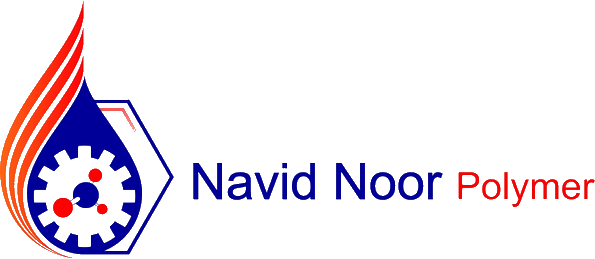
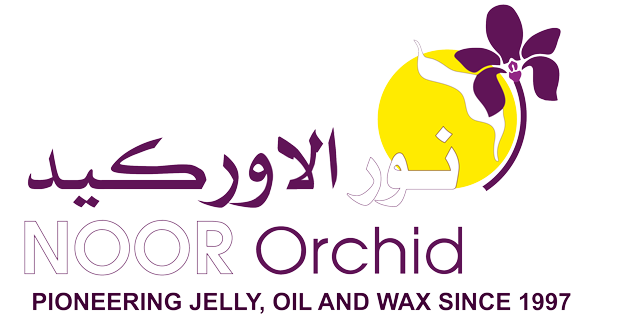






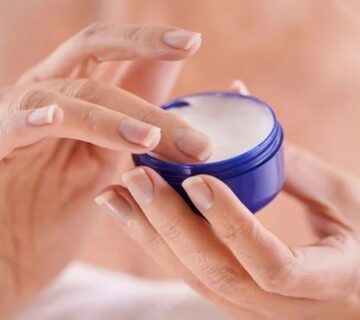
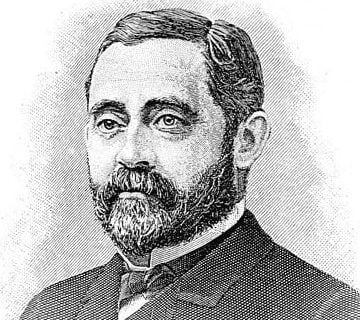
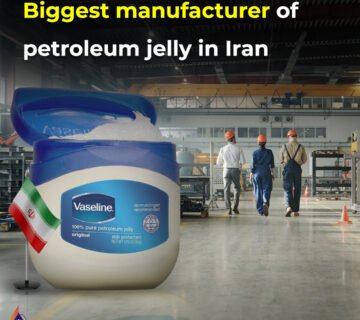
[…] Petroleum Jelly for Diaper Rash: Protecting the Most Sensitive […]